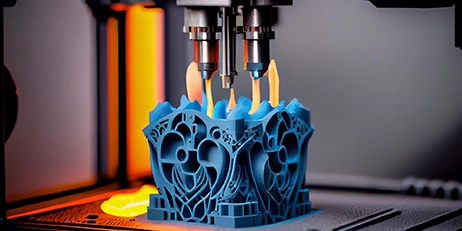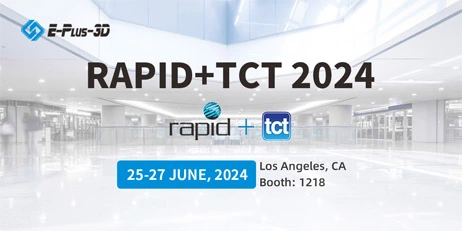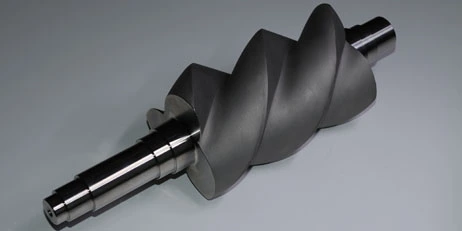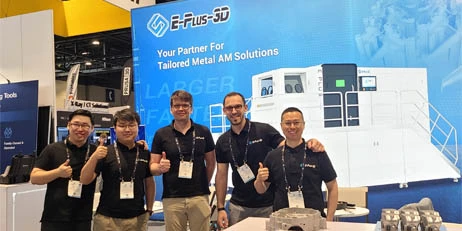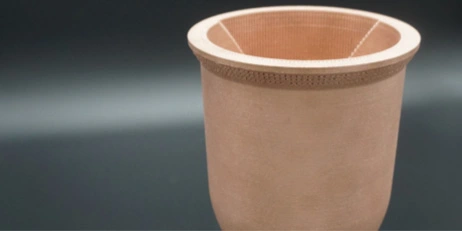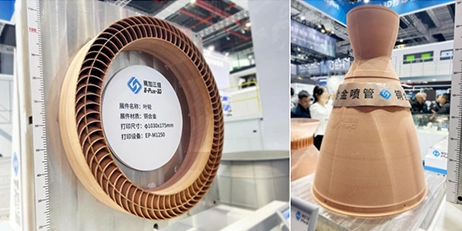3D printing, also known as rapid prototyping technology, is a method based on digital model files that utilizes adhesive materials such as powdered metal or plastic. It constructs objects through layer-by-layer printing. There are various techniques within 3D printing, distinguished by the way available materials are used and how different layers are assembled to create components. Common materials for 3D printing include nylon fiberglass, durable nylon, gypsum, aluminum, titanium alloy, stainless steel, silver plating, gold plating, and rubber-like materials.
Currently, the density of metal parts produced by 3D printing is low, reaching a maximum of 98% of the density of cast parts. There is still a significant gap compared to forged parts with higher strength in the same materials. The mechanical properties, surface finish, and other factors of 3D printed metal parts still cannot meet the requirements for high-precision and high-strength components.
Due to the layer-by-layer printing process used in 3D printing technology to construct objects, the resulting metal parts inevitably exhibit anisotropy at the microscopic level. This leads to the formation of layered composites, interlayer interfaces, and micro-pore characteristics.



Layered structure SEM photograph

From the internal structure of 3D printed metal parts, it can be observed that it is impossible to enhance their mechanical performance using conventional 3D printing technology.
From a mechanical perspective, the essence of a component lies not in its shape but in its internal stress structure, which directly affects the strength and stiffness of the structure. The formation of the internal stress structure of a component often requires the application of certain external constraint forces. After undergoing a certain deformation, a change occurs in the distribution of the stress field locally, thus meeting specific strength requirements. The layer-by-layer construction in 3D printing results in a completely uniform internal stress structure, which, even if a shape is formed, cannot meet the requirements for strength and stiffness.
Therefore, to improve the mechanical performance of printed parts, it is necessary to surpass existing technologies. In fact, 3D printing, as a CNC processing technology that adds thin layers of material one by one, has the potential to produce ultra-high-strength products.
When using nanometal particles as printing materials, these particles can be melted at lower temperatures by the print head, repeatedly sprayed and accumulated to form the desired shape. In the case of using the method of depositing and sintering powdered materials, nanometal particles can be fully melted and solidified according to the configuration laid out. Additionally, controlling the thickness of each layer of material during printing allows for the control of the size of the crystals formed after melting and solidification. (When the melted metal layer is thin enough and solidifies on a cold substrate due to rapid cooling, a high-strength amorphous metal structure can be obtained.) By controlling the thickness of each layer to be very small, crystalline products with a fine structure can be obtained. When using laser melting of metals, it is advisable to use high-power, short-duration pulse lasers that quickly melt the irradiated area and avoid prolonged exposure that may cause re-melting of adjacent crystallized areas, leading to the growth and fusion of crystals into the completed part. Moreover, the shorter the wavelength of the laser beam, the smaller the minimum diameter of the irradiated spot, allowing for finer control of the melting accuracy of the process. If it is necessary to melt an area smaller than the laser irradiation spot, the laser beam can be partially directed at the material being processed and already processed. If materials are stacked, melted in a planned manner (printing can be done in any order, such as row by row, column by column, alternating rows, alternating columns, or cross rows and columns), and temperature control is used for solidification (additional low-power beams can be used to control the cooling direction), the direction of crystallization can be deliberately controlled to achieve a crystalline structure arranged according to the planned intention.

Therefore, 3D printing, as a CNC processing technology that adds thin layers of material one by one, holds the potential for producing ultra-high-strength products. By utilizing nanometal particles and finely controlling the printing process, it becomes possible to achieve higher precision and greater strength in the manufacture of metal parts. This opens up new possibilities for the application of 3D printing technology in manufacturing, providing direction for future technological innovation and development.
